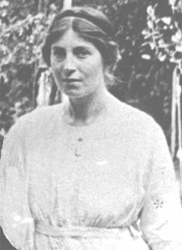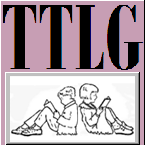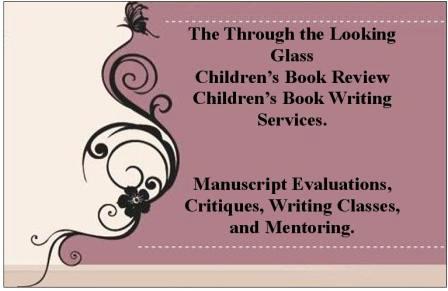The Authors and Illustrators - Profiles
Cicely Mary Barker
The books of Cicely Mary Barker have enjoyed an enduring popularity with adults and children alike. Her pictures of nostalgic children and floral sprites are charmingly delicate in detail and exhibit her Christian morality and understanding of nature.
Barker was born on 28 June, 1895 in Croyden, Surrey, England, to Walter Barker and Mary Eleanor Oswald. Walter Barker was descended from a long line of wood carvers, a profession which he also pursued. In 1909, he donated a hand-carved pulpit to the family church, St. Edmund’s in Croydon. His daughter also showed an innate sense of creativity early on, engaging in hours of drawing and painting as a child. She suffered from epilepsy as a child, a condition which disappeared after World War I and never afflicted her again. Because of her illness, she was treated as the baby of the family and overprotected her whole life. In part, this may have contributed to her understanding and portrayal of children in her artwork.
Due to her delicate condition, her parents thought it best to have her educated at home by governesses. Her father paid for a correspondence course in art which she continued until at least 1919. It provided her with details and the constructive criticism that she needed. He also enrolled her in an evening class at the Croyden School of Art when she was thirteen, which she continued to attend into the 1940’s, eventually earning a teaching position there.
At age 15, her father took examples of her work to the publisher Raphael Tuck. They were bought by them and published as a set of postcards. The next year, she won second prize in a poster competition run by the Croyden Art Society. She was soon elected to life membership in the Society, becoming their youngest member.
Barker had a special relationship with her father. He was proud of her and fond of calling her ‘Ciskin’. After her father’s untimely death in 1912, her older sister, Dorothy, tried to support the family with her small teaching salary. Barker also tried to help by selling poetry and illustrations to magazines such as My Magazine, Child’s Own, Leading Strings and Raphael Tuck annuals.
Barker is best-known for her ‘Flower Fairy’ series of books. Fairies were a popular topic at this time, Sir Arthur Conan Doyle’s book The Coming of the Fairies had been published only the year before and included five photographs of fairies taken by two little girls. The photographs had been declared genuine by an expert only to be proven fakes in the 1980’s. Queen Mary was fond of the fairy-themed work of the Australian Ida Rentoul Outhwaite and would send out postcards with her fairy images to her friends. It was also a time when people wanted to escape the harsh realities of progress, and return to a simpler and more innocent pre-scientific age.
Barker’s fairies were based on her knowledge of plants and flowers and her artistic studies of real children, each dressed to represent a different flower. The success of her first volume in 1923, which she also wrote, led to the creation of seven more. Barker created a new costume for each of the fairies, carefully taking them apart when she was done in order to reuse the fabric. She never compiled a book of winter flower fairies. It was not until 1985, 12 years after her death, that Flower Fairies of the Winter was compiled from illustrations and poems in her other 7 Flower Fairies books.
In 1924 Barker had a studio built in the garden of their home at 23 The Waldrons, which also housed her sister’s kindergarten school. In 1961, she told a Croyden Advertiser reporter,
“My sister ran a kindergarten and I used to borrow her students for models. For many years I had an atmosphere of children about me—I never forgot it.”
Many of these students appeared as her Flower Fairies until 1940 when her sister closed down the school. After Dorothy died in 1954, Barker designed a stained glass window for St. Edmund’s Church in memory of her sister.
Barker was a devout Christian, contributing designs for postcards and greeting cards over the years to the Society for Promoting Christian Knowledge, the Girls’ Friendly Society, and the Society for the Propagation of the Gospel. In 1925, one of these paintings, ‘The Darling of the World is Come’ was purchased by Queen Mary. In addition, she also made paintings for churches, as well as donating paintings to help raise money.
She continued to paint until her eyesight began to fail her towards to end of her life. She died on February 16, 1973 at the age of 77 years old. Coincidentally, it was the fiftieth anniversary of the publication of her first ‘Flower Fairy’ book that year.


An Online Children’s Book Review Journal
Through The Looking Glass Children’s Book Reviews
Online book reviews for the child in your life featuring both new and popular children's book authors

Kids book reviews, including book reviews of chapter books, novels, picture books, and non-fiction from famous children’s literature authors. Your review site of books for children.
Welcome to Through the Looking Glass Book Reviews. We have moved! Please visit the new site at www.lookingglassreview.com to enjoy the new website.


